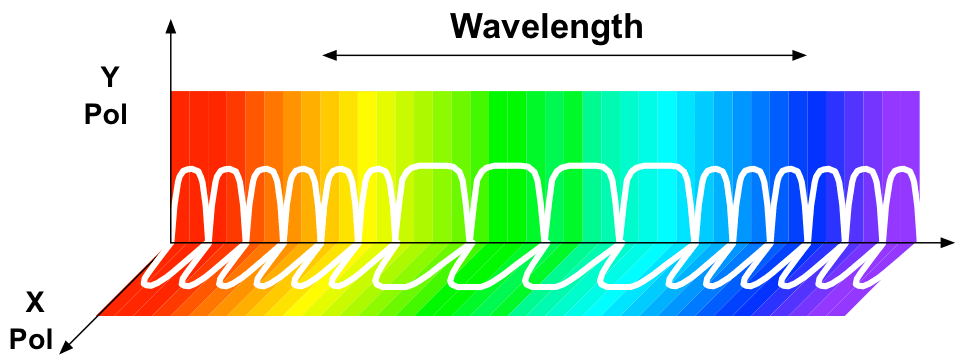Wired
Everything You Want to Know About Coherent Optics for Access Networks (But Were Afraid to Ask)

The cable industry has been well served by its extensive fiber deployment that took place during the initial hybrid fiber-coax (HFC) buildout. Even though cable operators have answered capacity demand through fiber node-splits in specific high demand scenarios, only recently have operators embarked on deeper-fiber roll-out strategies as part of a comprehensive long-term evolution plan.
The exponential growth in demand for capacity prompted CableLabs to explore how to best use cable’s optical infrastructure resources. This exploration led to research activities for the introduction of coherent optics in the access environment. We’re delighted to announce the publication of the book “Coherent Optics for Access Networks” by CRC Press (Taylor & Francis Group), highlighting many of CableLabs’ research activities.
The book discusses how coherent optics in the access network is re-engineered to simultaneously achieve lower complexity and higher performance afforded by the generous link margins characteristic in shorter links. This instantiation of coherent optics is not only suitable for cable access but also for telco and cellular fiber access networks.
Recent developments in the field of coherent optics for access network applications that will support point-to-point (P2P) aggregation use cases and point-to-multipoint (P2MP) fiber to the user’s passive optical network are examined. Optical industry trends as well as the conventional intensity modulation and direct detection (IM-DD) systems and newly developed advanced direct-detection architectures leveraging four-level pulse amplitude modulation format, Stokes receivers and Kramers–Krönig receivers are also presented.
This book focuses on how to adapt coherent optics technology to the access environment in ways that address major cost challenges, such as simplified transceiver design and photonic integration. An example, is the introduction of full-duplex coherent optics, which enables simultaneous bidirectional transmission on the same wavelength thereby doubling fiber’s capacity. Full-duplex coherent optics is an approach that is feasible to implement in the shorter-link-length access environment.
The book provides economical modeling for aggregation uses cases in comparison with traditional 10G IM-DD DWDM based solutions. Implementation requirements, unique to the access environment, are also provided when introducing coherent optics into access scenarios, including coexistence with existing services and security challenges. Progress on recent-specification development activities is reviewed for many industry organizations that focus on short-distance coherent optics interoperability.
In writing this book, the authors have benefitted from the numerous interactions with experts within the optical telecommunication components and systems community, in particular with the vendor and operator members that contributed to CableLabs’ point-to-point coherent optics specification. This book represents a first look of technological advances in coherent optics, in the interest of future proofing of our access networks.
Favorable coherent component cost-reduction trends are expected to continue, technological advancements will enable higher performance and simpler implementations will make coherent technology more pervasive in the access network so that exponential growth in capacity is achieved. Given the headway gained in specification generation bodies and the development progress of optical component and transceiver manufacturers focusing on shorter link distances, a future with coherent optics in the access network is upon us.

Wired
Future Proofing Cable’s Optical Access Network: “A Coherent Story”

The demand for data network capacity has been growing exponentially year after year with no sign of stopping. If the past is a guide to the future, the cable industry must come up with radically more efficient use of the existing cable infrastructure in order to meet demand.
Today, the most constrained part of the network, and the most costly to upgrade, is the fiber infrastructure between the headend and the fiber node, to the wireless cell radio or to large business customers. Avoiding costly fiber re-trenching requires a fundamentally new approach to this part of the network. This is where coherent technology provides an opportunity.
If you are familiar with coherent optics, then you are aware that the technology has been used in long-haul fiber optic networks for decades. CableLabs has adapted that technology for use in short-haul access networks, and simplified it to reduce the cost. And it has much higher capacity for future growth than the analog optics that are used in many of today’s HFC networks – possibly more than 1,000 times more capacity! We have already demonstrated 50 times more capacity than analog optics can achieve today by using coherent optics on 80 kilometers of fiber, and more improvements are on the way.
Using traditional analog optics, to achieve that high transport medium quality requires increasing the optical transmit power level, which unfortunately reduces the number of optical analog carriers the fiber can support due to fiber non-linearity effects. Figure 1 shows a representation of fiber’s wavelength spectrum with 4 analog optical carriers.

Figure 1 – Fiber spectrum with 4 analog carriers
This limitation on analog optical transport has prompted the cable industry to look into other architectural evolution approaches. One approach that solves the analog limitation problem, while also tackling space limitations that may exist in certain hubs, is the distributed architecture approach. In a distributed architecture no radio frequency (RF) is transported through the optical link. The optical link does not contribute to distortion of the DOCSIS® RF signal, only the coaxial portion of the network is responsible for the degradation of the RF signal.
Today, this digital optical link uses intensity modulated direct detection systems such as the ones found in 10 Gigabit Ethernet links and in passive optical networks (PON). In these non-coherent systems, the signal modulation used is On-Off Keying (OOK). OOK is achieved by simply switching the laser source off and on. Non-coherent systems operate at lower power than analog optics and can therefore make better use of the wavelength spectrum in fiber. Figure 2 depicts the wavelength spectrum of fiber with several non-coherent OOK optical carriers.

Figure 2 – Fiber spectrum with intensity modulated non-coherent carriers
A high-capacity non-coherent (but digital) optical link can carry 100 Gbps using 10 wavelengths (optical carriers) carrying 10 Gbps each. Non-coherent systems are a suitable near term approach, but there are additional fiber resource challenges that have to be considered when evaluating a long-term strategy.
HFC Networks have been typically designed with 6 to 8 fibers connecting the hub to the fiber node. Two of these fibers are used for primary downstream and upstream connection and in some cases two additional fibers are used for redundancy purposes. The rest of the fibers were left for future use. Unfortunately, a large amount of these ‘future use’ fibers, because of an ever-increasing demand for bandwidth, have since been repurposed for business services, cell backhaul, node splits and fiber deep architectures. In some cases, only the two primary fibers that are feeding the fiber node remain available for access transport.
In fact, the architecture migration toward Full Duplex DOCSIS, which strives towards a more symmetric transport, relies on a node plus zero amplifiers (N+0) architecture. A typical node in today’s HFC networks will supply services to 500 households. When converted into an N+0 architecture, the result is the creation of 12 to 18 deeper N+0 nodes. The challenge for the optical portion of the access network becomes supplying enough bit rate capacity to 12-18 N+0 nodes, each capable of supplying 10 Gbps to residential subscribers.
This fiber shortage problem will only intensify as fiber demand for business services and wireless backhaul increases. Assuming that costly fiber re-trenching from hub to original fiber node is to be avoided, a different solution must be found to provide the required capacity. This is where coherent technology provides an opportunity!
Coherent technology has been used to achieve higher speeds than any other optical technology. In coherent optics, both amplitude and phase modulation are used to put information onto an optical carrier. This enables the generation of Quadrature Phase Shift Keying (QPSK) and Quadrature Amplitude Modulation (QAM) constellations carrying information. The nature of the coherent signal also allows the separation of the optical signal in two orthogonal polarizations. Each polarization can independently carry the two-dimensional constellations mentioned above. The signal processing used in coherent systems facilitates shaping of the spectrum of the signal to avoid interference with adjacent optical carriers. Along with the much lower power requirements, coherent technology allows for efficient multiplexing of the optical carriers within the wavelength spectrum of fiber. Figure 3 shows the wavelength spectrum of fiber with coherent optical carriers over 2 polarizations.

Figure 3 – Efficiently packed coherent optical carriers over orthogonal polarizations
Coherent optics has been used in the long-haul environment for over 30 years. The long-haul environment is a harsh environment that consists of very long distances, sometimes up to 3000 km. In a long-haul environment, significant channel compensation is employed to correct the long distance related impairments, making long haul solutions expensive.
The access network environment is very different from long haul networks in one key respect, optical links in access networks are typically no longer than 30 km. That is two orders of magnitude shorter than long haul. The complex and expensive system implementation that long haul is known for no longer applies to access implementation. The shorter fiber lengths result in minimal dispersion of the optical signal. Furthermore, since no in-line amplification is needed, non-linear distortion and noise are significantly reduced. This increases the link margin and enables much lower implementation costs. It is NOT your father’s coherent implementation!
Here at CableLabs® we have re-engineered the coherent link to meet the special conditions of the access network. We have developed technology that is higher performance and much lower cost when compared to long-haul or metro environments.
In the laboratory, we have achieved 256 Gbps over 80 km on a single wavelength with minimal dispersion compensation. That is ~26 times the capacity of what can be achieved over an analog optical carrier fully loaded with 1.2 GHz worth of DOCSIS 3.1 signals. We have achieved that using a symbol rate of 32 GBaud (32 GHz), using 16QAM modulation (4 bits per symbol) over 2 polarizations (32*4*2=256 Gbps). In addition, we have multiplexed eight of these wavelengths to achieve 2048 Gbps. That is 50 times more than what can be achieved over 4 analog optical carriers each with 10 Gbps of DOCSIS 3.1 payload!
The optical access environment could lend itself to further improvement in capacity per wavelength by further increasing symbol rate and/or modulation order. A future achievement of 64 QAM modulation could represent the pinnacle in efficiency and capacity per wavelength of our optical access environment. One can only dream of such transport efficiencies in the long-haul environment.
Coherent optics is extremely flexible. Capacities per wavelength greater than 256 Gbps may not be needed at each target end-point in the near future. Maybe 100 or 200 Gbps will do. The fact that modulation order, polarization and symbol rate can be varied enables significant flexibility in the type of supported services. Lower symbol rates allow for multiplexing 100 or 200 Gbps wavelengths to end points. In the access network, it makes sense to dedicate a single wavelength to a target end point (subscriber). In the access, since wavelength spectrum is a precious commodity, higher speed should not be wasted on multiple wavelengths but used to reach a greater diversity of target end-points. This avoids retrenching from the hub to original fiber node in order to lay additional fiber strands. Ideally, operators would only have to deploy more fiber from the original fiber node to deeper end-points in their networks.
As the industry evolves toward Node+0 architectures, the volume of optical connections to intelligent nodes will increase substantially compared to traditional architectures. Interoperability and a robust vendor ecosystem are therefore key to providing a low-cost solution using coherent optics.
With key goals being interoperability and vendor diversity, CableLabs intends to develop specifications which leverage the aforementioned benefits of coherent optics in the access network. Similar to previous specification development efforts, the coherent optics specifications will focus on interface requirements, signal integrity requirements, configuration, and management. As usual, CableLabs welcomes involvement from the vendor community to develop these specifications. In the near future, look for announcements related to the establishment of a coherent optics working group to develop the specifications.
At CableLabs, we are developing and specifying technology that allows the cable industry to support the growing requirements of broadband access. Come and join us in developing tomorrow’s high capacity network solutions!
Dr. Curtis Knittle, VP of Wired Technologies, also contributed to this article.



